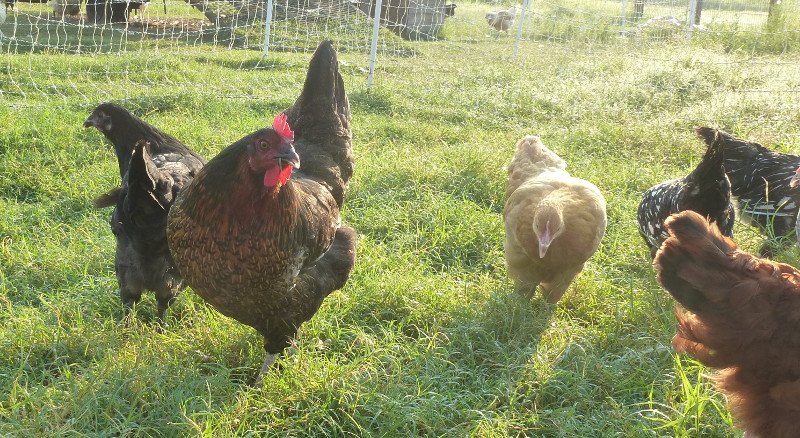How Many Square Feet Per Chicken?
(This is a guest post by our good friend Matthew Pressly. Matthew has been raising and breeding Black Australorps on pasture for many years and shares his experiences below.)
Size is an important consideration. A coop that’s larger than necessary can work, but costs more to build, and if intended to be portable, is more difficult to move.
On the other hand, a coop that’s too small can lead to diseases, pecking and other problems related to overcrowding.
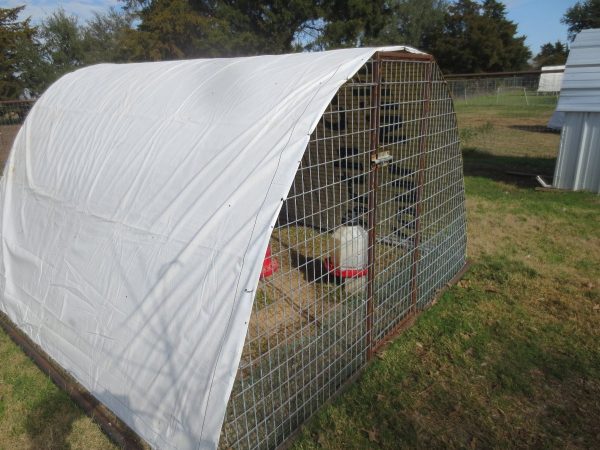
What Size Chicken Coop Do I Need?
Housing is one of the largest start-up costs in raising chickens. Though building a coop can tend to be an iterative process, it’s a good idea to plan it out as best you can before you start to minimize costs and “rework.”
So what’s the right size for a coop? That depends on several things:
1. Do They Have Access to Fresh Ground Regularly?
Chickens need (and prefer) fresh ground. They are healthiest and seem happiest when they get frequent or continual access to fresh pasture on which to forage.
If you use portable housing (chicken tractors, for example), you’re able to give them fresh ground every time you move the coop.
A portable coop that gets moved to fresh pasture each day doesn’t need to be as large as a stationary chicken coop that never gets moved.
On the other hand, if you use stationary housing, unless you provide some type of movable chicken run, you’ll need to supply your birds with more space.
2. Choice of Breeds
If you raise a large, fairly active dual-purpose breed, you’ll obviously need more space per bird than you would for smaller or less active breeds.
3. Age
Another fairly obvious observation: baby chicks require very little space. You can start with about 1/2 square foot per bird. But as they grow, they’ll need considerably more space.
Rule of Thumb for How Much Space to Provide
I keep my Black Australorps in 10′ x 10′ hoop coops with an open floor, and I move them to fresh ground nearly every other day (about 3 times a week).
When the weather is wet and rainy, I may move them a full coop length daily or at least move them onto partially new ground each day (a partial coop length).
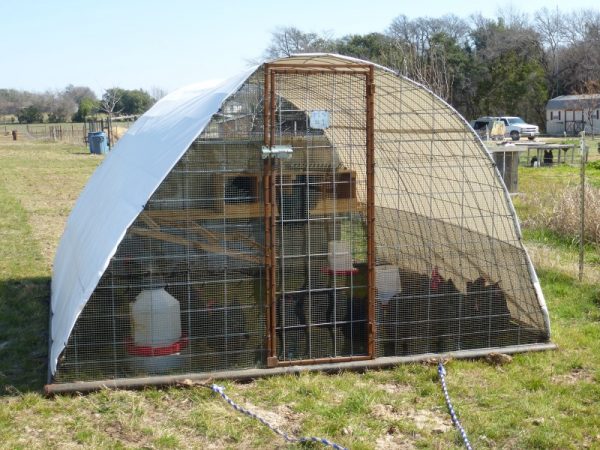
Since the adult birds are breeders, I like them to have ample space. I don’t want to run into any unnecessary problems with disease or pecking, and I want to keep them in the best of health.
Typically, I end up with 5 to 15 adult birds in a hoop coop at any given time. That’s a range of 20 square feet per bird down to 6-7 square feet per bird. These are large, adult birds, and that is a generous amount of space.
When I’m raising a new flock of breeders for next season and the birds are still growing and have not yet started laying, I can put 55-60 birds in the same size coop up until they reach about 6-8 weeks old.
At that point, it begins to feel too crowded. By 8 weeks, cockerels are becoming easy to distinguish from pullets, so it’s time to split the flock into two separate hoop coops — about 30 pullets in one and 30 cockerels in another.
That will be ample space up until they reach about 16-18 weeks old, at which time, it will start to feel a little crowded, and I’ll need to begin culling or further dividing up the flock.
Using these figures as an example, some rules of thumb for large, dual-purpose breeds are:
- a minimum of 4 square feet per bird for grow-out, giving them fresh ground as often as needed, up to once per day
- 6-8 square feet per bird for a mature laying flock, with fresh ground 3-7 times per week
Other Considerations on Coop Space
I rarely make housing decisions strictly on the basis of numbers. It’s more intuitive than that, but numeric rules of thumb are helpful for planning.
Some other things to consider in how you house and maintain your flocks:
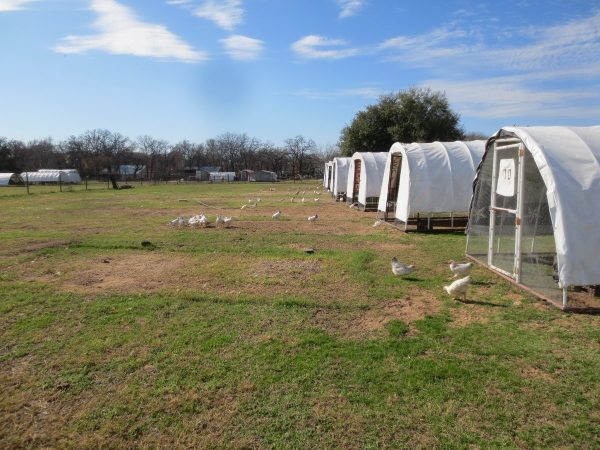
- maintain clean bedding
- have good ventilation
- cull sick birds quickly
- adequate lighting
- sufficient shelter from rain and wind during cold weather
- have good, clean water and an adequate supply of good quality feed
Cramped housing or overcrowding is a potential source of stress for your birds. Your flock will stay the healthiest if you can eliminate unnecessary stress. All of the things mentioned above will help with that.
When stress gets above a certain level, that’s when you’ll start to see the symptoms of overcrowding, so you’ll want to keep flock stress to a minimum.
How Much Space Do 10 Chickens Need?
For a flock of 10 mature, dual-purpose chickens, how much space would they need?
If we give them 6-8 square feet per chicken, that would be 60-80 square feet, total. So an 8×8 or an 8×10 foot coop would be adequate, assuming that you provide fresh ground regularly.
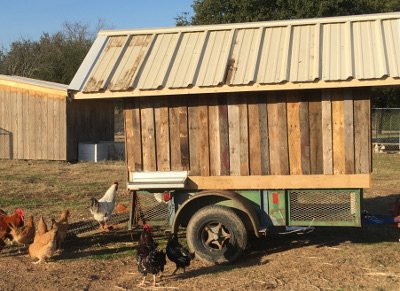
How Much Space Do 6 Layers Need?
For 6 mature large-breed layers, you’d need a coop that’s about 36-48 square feet, so 6×6 feet up to about 6×8 feet would do.
How Much Roost Space Do Chickens Need?
To roost, each chicken needs just a little more than its own width.
For large, dual-purpose chickens, I would allow about 10-12 inches of roost per bird. The roosts need to be far enough apart that the birds behind don’t bump into the birds in front of them or behind them, or the wall.
A spacing of about 18 inches between roost bars will work well. You can use either a stair step arrangement or a horizontal arrangement.
How Many Nesting Boxes Do I Need?
Generally, one nest box is plenty for 4-5 laying hens. For 15 hens, aim to provide at least 4 nest boxes. If you have too few nest boxes, you’ll tend to have more broken eggs. Broken eggs can lead to the hens starting to intentially break and eat the eggs, so it’s best to prevent that. Having plenty of nest boxes that are filled with clean pine shavings helps to prevent broken eggs and leads to cleaner eggs.
Problems that Result from Overcrowding Your Chickens
Giving your birds enough space is one of the most important things you can do to improve their health and prevent problems.
Some of the problems that can result from allowing your chickens to be overcrowded are:
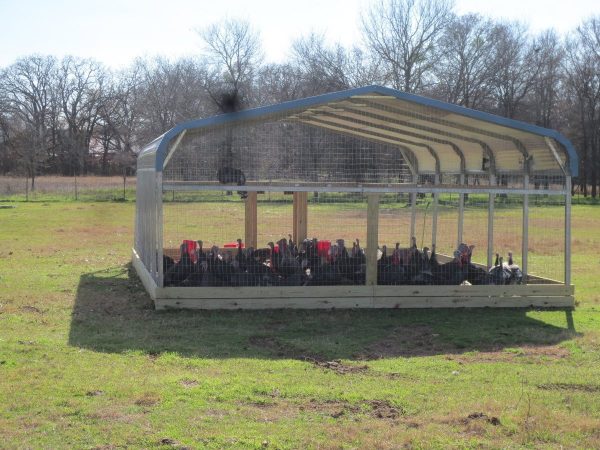
- increase in disease; a higher likelihood that you’ll have diseased birds and that those diseases will spread to other birds within the flock
- disease will spread more quickly
- increase in problems due to pecking
- build-up of manure
- poor air quality — ammonia from manure builds up quickly in an overcrowded coop. Ammonia is harmful to their eyes and lungs (they are more susceptible to it than we are, as humans).
- more broken eggs from your laying flock
- higher stress on the birds
- lower lay rates from stress and reduced health
- lower resistance to disease, due to stress
- less exercise, less room to move around
- for younger birds, some birds may die or become weak due to piling up of birds at night, which can suffocate birds that end up on bottom
Started Pullets
Year-round, we have a variety of started pullets for sale that are close to laying age. We ship Started Pullets to most of the United States.
